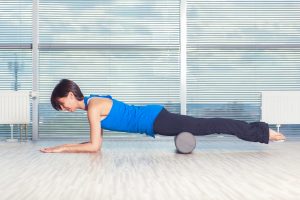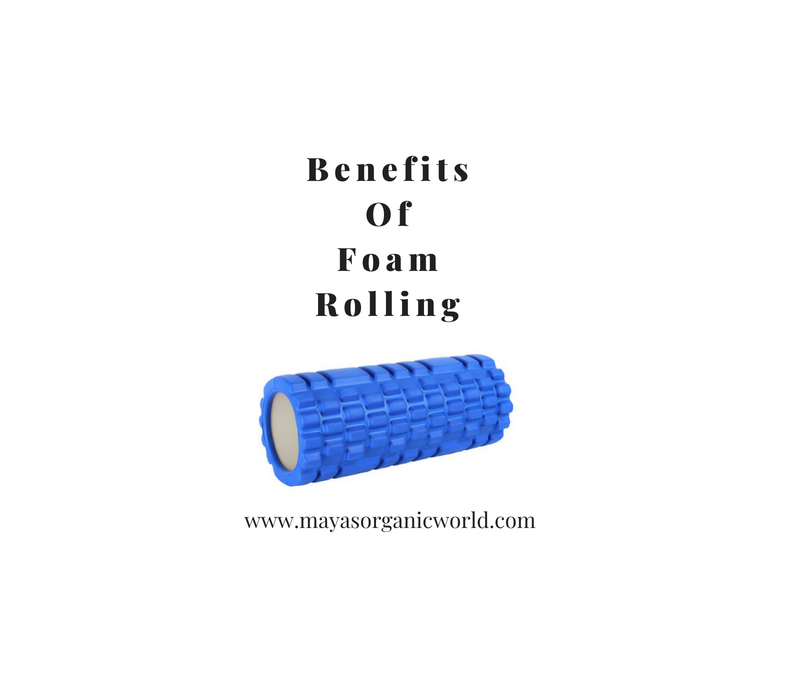Benefits of Foam Rolling
Foam rolling can also be called “deep tissue massage”. Myofascial release is at the core of foam rolling. The myofascial system comprises of muscles and connective tissues in and around your bones and organs. When your body is fatigued, tired, inflamed or stressed the fascia loses flexibility and ceases up, therefore becomes stiff. The foam roller alleviates myofascial tension and can improve: back pain, shoulder pain, lower back pain and symptoms related to fibromyalgia.
In addition the
Benefits of Deep Tissue Foam Rolling
- Helps reduce delayed onset muscle soreness (DOMS)
- Decreases lactic acid build up
- Reduces injuries by increasing range of motion
- Reduces arterial stiffness
- Improves blood flow
- Improves flexibility
- Helps break up scar tissue
When you want to use the foam roller for your whole body, START from your feet to your neck. Slowly working on the following body parts. You can do individual body parts too. Do not roll over bones.
- Feet
- Calves
- Hamstring
- Gluteus
- Lower back
- Upper back
- Neck
| Foot roll
Roll the roller gently over your feet. Ensure you are sitting with the correct posture and breathe. Gentle rolling can help reduce foot pain and stress in the feet caused by overuse.
|

| Calf
Sit and raise your body slightly off the floor. Ensure you are using your core muscles to stabilise yourself. Slowly roll the foam roller over your calf. 1 calf at a time or both calves. |

| Gluteus and Hamstring
Slowly place your hands in a comfortable position. Stabilise yourself, breathe deeply and slowly move the roller a few inches back and forth over your gluteus. The current picture shows you how to ease the gluteus muscles. To ease your hamstring muscles place the roller at the bottom of your gluteus, where the arrow is pointing. In the same position roll slightly back and forth. Improves leg circulation, fatigued and hard to reach muscles. |

| Upper back/Lower Back
Ensure you have eased any tension in your hamstrings and gluteus before working on your lower back. We prefer you to stand up straight in a slight, controlled mini squat position. Slowly press the roller against the wall and move up and down. For your upper back place the roller further up, where there is pain. Depending on how much pain you have, press the roller into your back lightly or slightly heavier. Keep your feet flat and do not bend your knees over your feet. |

| Thigh
Remember to always control your posture, slowly move your body back and forth. Do not run the roller over your knees. |

There are many YouTube videos that will further demonstrate how to use the foam roller correctly.


Wow! This is so powerful! “But what is it called when your entire body is a blind spot“ gave me chills. Grief and depression separate or combined wreck so much havoc on our bodies and minds that we lose ourselves. I know can I have been there, am there. I am fighting my way back now. Using a similar path of working out, moving on the breath, and myofascial release using YTU therapy balls. Thank you for sharing your beautiful journey. gluten sensitivity
Hi there. Thank you for sharing your journey with us. We do a specialized bespoke therapy program, which incorporates: lifestyle, diet, emotions and mindset. Our findings have been ground breaking. The most severe clinical manifestations are related to stress. So even if a client is eating healthy but they are stressed, this has a detrimental effect on the body. We hope our page continues to benefit you. Please do share our page so others can benefit.
Pretty! This was a really wonderful post. Thank you for your provided information.